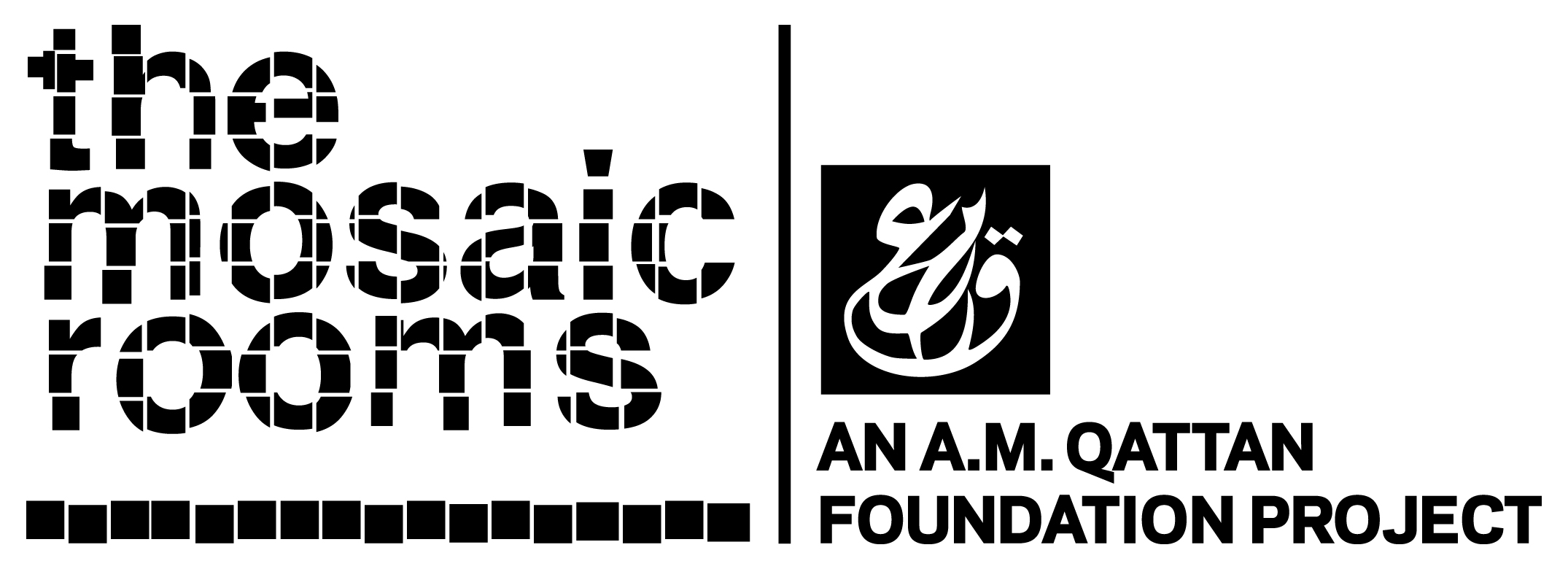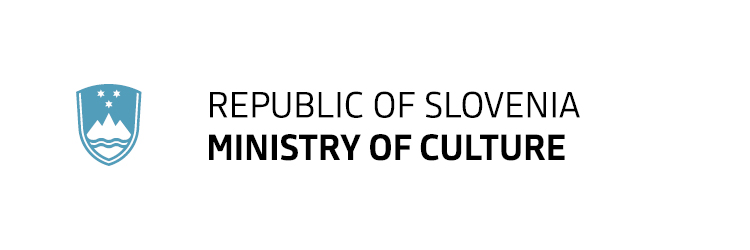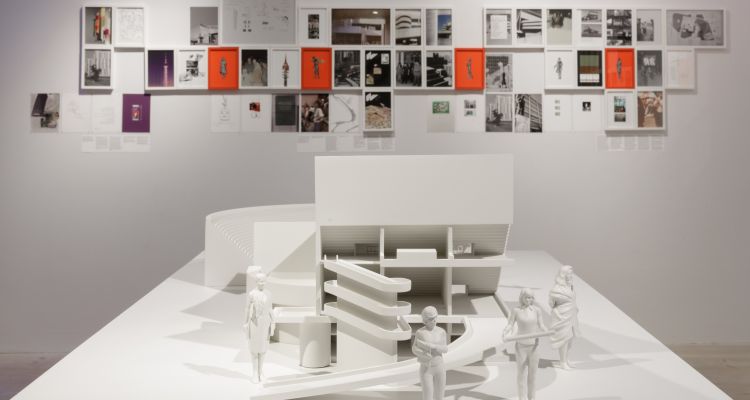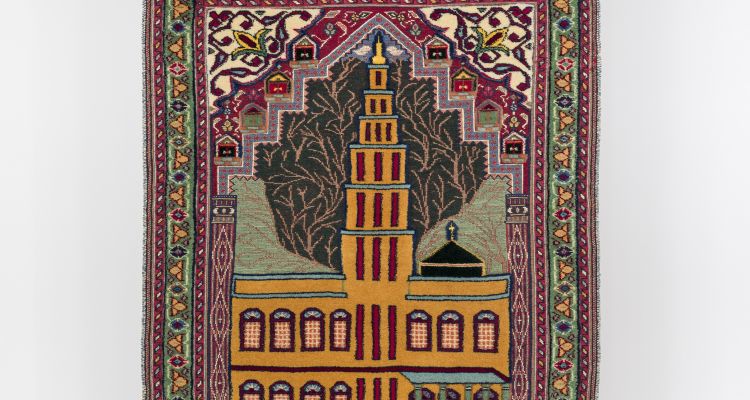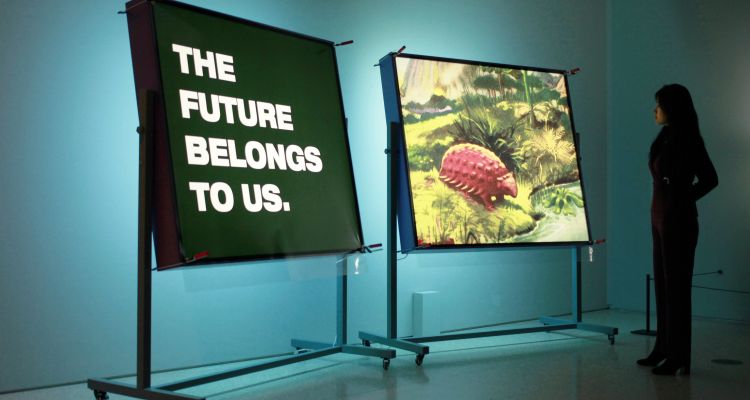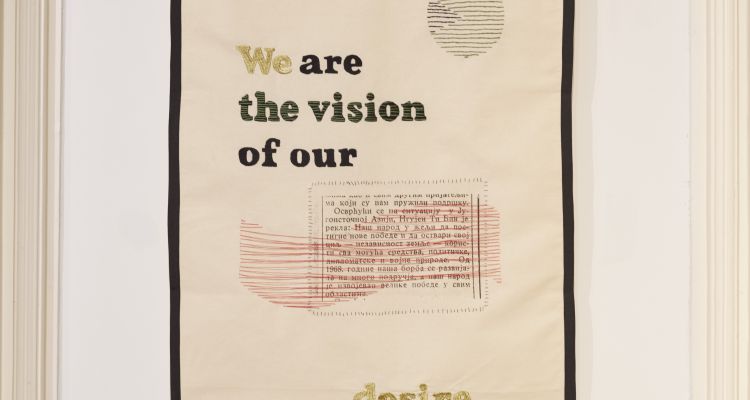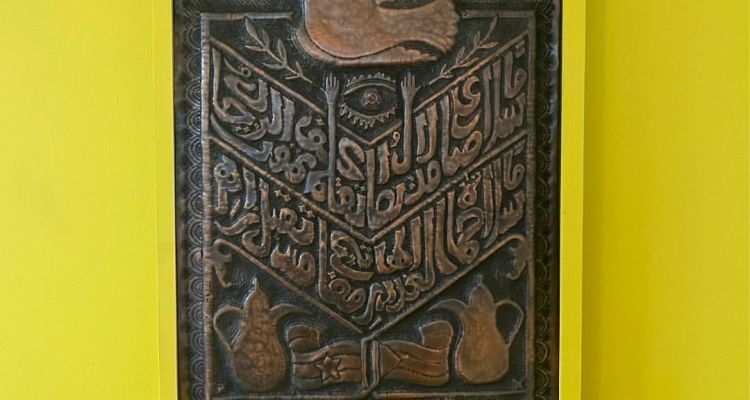Ala Younis, Alia Farid, Basim Magdy, Essa Grayeb, Free Palestine Poster Project, KURS (Miloš Miletić & Mirjana Radovanović), Larry Achiampong, Mona Rouhana Benyamin, Nika Autor, The Non-Aligned Art Collection Laboratory (Omar Bsoul, Kareem Dabbah, Inji Efflatoun, Mamdouh Kashlan, Choukri Mesli, Khudhair Shakirji).
The exhibition Constellations of Multiple Wishes was first presented in 2023 at The Mosaic Rooms, London. It contemplated past and present sites of struggle through entangled recent histories from the foundations of the Non-Aligned Movement (NAM). Agitating the relationship between time and memory, the exhibition refused the position of historian and instead reflected on personal and collective ideas and political desires that ripple and echo across time. The catalyst for the exhibition was the Southern Constellations exhibition series, initiated by the Moderna galerija, Ljubljana in 2019 and followed by different iterations in Gwangju, Rijeka, Skopje, and Podgorica.
Constellations of Multiple Wishes: Along the Eastern Horizon is the latest iteration in the Constellations series. It focuses on deliberations on other Easts, beyond past colonial divisions, historical narratives and political alliances. “The East” as we know it has historically always been an elusive concept, constantly shifting or overlapping with other East(s) as, for example, the Balkans and the Middle East. These “Orients” were divided in the 19th century based on the Eurocentric colonial perspective: the Near East included the Ottoman Empire and the Balkans, the Middle East stretched from the Persian Gulf to Southeast Asia, and the Far East covered East Asia, North Asia and Southeast Asia. The focus has thus always been on the stereotypical Other as the West has persistently imagined it: its incompletely developed antipode, a European burden, an irrational, violent people from the periphery of the Western world. This was also one of the pretexts used then and still used by the Western powers to justify intervention and control in the regions.
In the decades after World War II, the Easts largely emerged from the grip of colonialism, helped also by numerous anticolonial, antifascist, and emancipatory movements inventing new political languages of liberation rooted in solidarity and common struggle. Almost all of the newly liberated countries became members of the Non-Aligned Movement. However, many of these past alternatives appear to have failed us, and advocating for rights within current systems can feel futile. Even though Palestine is still a member of the NAM, this supposed “biggest peace movement in history” has not done anything to end the genocide in Gaza. Instead, the NAM has proved once again to have become one of the biggest political disappointments, unable to provide solutions to the struggles and tragedies of its member states – in Iraq, Libya, and Syria or today in Palestine. What remains are the grandiose historical ideas and unfinished utopias. But we do not have to fix the movement in time or render it obsolete. If the world that it was attempting to build anew has not arrived, perhaps today we are still working towards it.
Instead of dwelling in nostalgia and things lost in the currents of history, the works in Constellations of Multiple Wishes: Along the Eastern Horizon demand and seek out alternative routes, networks, railroads, and constellations. Setting up a dialog among archival materials, existing works and contemporary commissions, the works in this exhibition explore past imaginaries and words yet to be enacted, trace shared experiences, consider relationships and borderlines that have since been dissolved and that continue to displace. Laced with poetic interventions, they move through failure and absurdity, anxiety and solidarity, and hope and resistance. They do this by centering on the multiple Easts, their histories, narratives of building, and utopian visions of the future, while giving space to the voices that could not be heard lately.
Works at the exhibition
Working in installation, publishing, and video, Ala Younis employs archival found material in research-based projects that combine personal narratives with collective and national histories of the Middle East. Younis is interested in the roots and development of modern Arab identity, both political and social. In Plan for Greater Baghdad (2015) she explores the ideological associations of Iraq’s buildings and monuments, while in Enactment (2017–2024) she focuses on the forms the body takes as it supports other bodies, narratives, or exhibitions of power; the slippery terrain between the performative act and the creative evidence of historical events.
Mezquita de Hatillo (Puerto Rico), 2014 is an early iteration of the work that Alia Farid has been doing since 2013 tracing Arab and South Asian migrations to Latin America and the Caribbean. Based on conversations with diaspora communities, Farid conjures a landscape of transnational spaces depicted through textile.
In U.A.R. – the Utopian Arab Republic, (from 2023–ongoing) Essa Grayeb presents his long-term research into the material and visual representations of the U.A.R. (United Arab Republic), a union that gave the doctrine and sentiment of “the Arab nation” a tangible reality, and while one of its principal aims was to achieve a form of pan-Arab solidarity, this quickly gave way to many disappointments.
Nika Autor’s Newsreel 242 – Sunny Railways (2023) is a tribute to over 200,000 young brigadiers from around the world, including a Palestinian brigade, who took part in the building of the new 242 km Šamac–Sarajevo railway in Bosnia and Herzegovina in 1947, constructing a new, better world based on different, more equal foundations.
Moonscape (2020) is a short film by Mona Rouhana Benyamin that takes the form of a music video for a middle-of-the-road ballad, performed as a duet between male and female singers in Arabic. The song traces the story of a man called Dennis M. Hope, who claimed ownership of the Moon in 1980 and founded the Lunar Embassy – a company that sells land on a variety of planets and moons, and makes a connection between his story and that of the director, a young Palestinian woman living under the Israeli occupation, longing to end the misery of her people in any way possible. Her second video Trouble in paradise (2018) is a dysfunctional sitcom set out to explore humor as a mechanism of coping with trauma, pain and taboos in relation to the Nakba and the Israeli occupation.
Our Prehistoric Fate (2011) by Basim Magdy consists of two large Duraclear prints hanging on Yugoslav military lightbox displays attached with clamps. The first reads “The Future Belongs to Us” in large letters, the second is an encyclopedia illustration from the 1960s showing an Ankylosaurus, a prehistoric creature, approaching a pond to drink. Magdy’s references abound: they range from the slick veneer of advertising, the sinister tropes of science fiction and comic strip to the documentary style of nature, science and technology shows.
A Letter (Side B), 2023, looks at the affective impact of history, migration and geographical separation on two brothers living in Britain and Ghana. The film collapses time, exploring how the past interrupts and impacts the present, and incorporates recent footage filmed by Larry Achiampong in Ghana as well as archival footage from the Museum of African Art: The Veda and Dr Zdravko Pečar Collection in Belgrade.
In freedom is indivisible (2023) KURS (Miloš Miletić & Mirjana Radovanović) present poems, new interpretations of texts made from the speeches delivered during the Non-Aligned Summit Conferences using the technique of erasure. The poems serve to highlight, summarize, or draw out less prominent meanings of the original text, and their full effect depends on the interplay between the text in the background and the text in the foreground.
The Non-Aligned Art Collection Laboratory (Marina Čelebić, Anita Ćulafić, Nađa Baković, Natalija Vujošević) is a project that aims to develop contemporary research and archival artistic practices at the Museum for Contemporary Art of Montenegro. The collection holds some 800 artworks from 56 countries acquired by the Gallery of Art of the Non-Aligned Countries during its existence from 1984 to 1995. The works by Omar Bsoul, Kareem Dabbah, Inji Efflatoun, Mamdouh Kashlan, Choukri Mesli and Khudhair Shakirji are presented at the exhibition.
The Free Palestine Poster Project is a website that acts as a curated archive of posters submitted by designers from all over the world, which can be downloaded and used as an expression of solidarity with Palestine. It continues the strong tradition of print and design as powerful media for conveying support for anti-colonial struggles and liberation movements.
The exhibition also includes archival materials and two research projects: booklets from the series Nesvrstanost i nesvrstani (Non-Alignment and the Non-Aligned), 1970s; postcards sent from member countries of the NAM to Yugoslavia between 1960 and 1980; a photo album: volunteer youth work brigades, the Šamac–Sarajevo railroad, 1947; a short film about Palestine Blood and Tears (Krv i suze), produced by Filmske Novosti, Belgrade, 1970; photographs of the Yugoslav cultural and entertainment groups performing under the auspices of UNEF in Sinai and Gaza in 1959 and 1961; the catalogue of the exhibition of posters Palestine, the Kidnapped and Negated Homeland Centar za kulturu i informacije Zagreba, 1979; Cartography of Yugoslavia’s International Collaborations in Culture with the Middle East (Teja Merhar) and Chronology: Relations between Yugoslavia and Palestine in 1946–1991 (Žiga Smolič).
The exhibition is curated by Bojana Piškur (Moderna galerija) and Angelina Radaković (The Mosaic Rooms) in partnership with The Mosaic Rooms, London.
